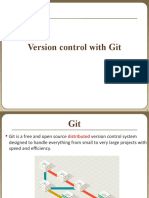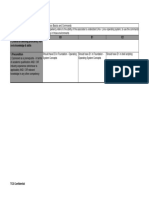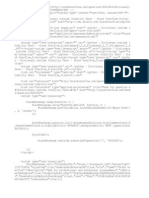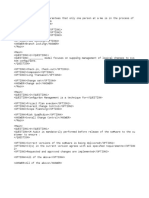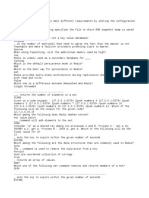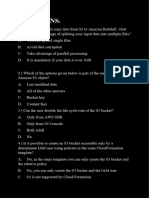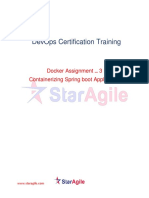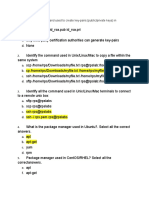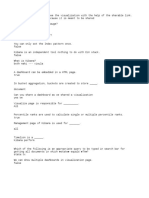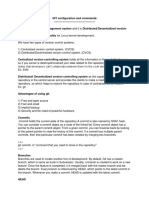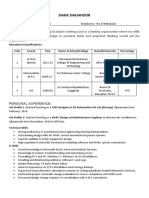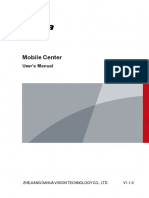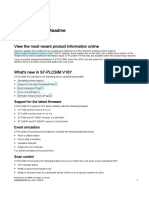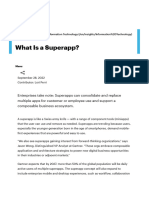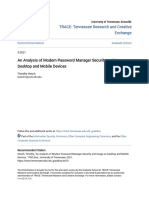0% found this document useful (0 votes)
411 views77 pagesGit Github PDF
Here are the steps to obtain older versions:
1. Checkout the commit you want by its SHA:
git checkout <SHA>
2. This will create a "detached HEAD" state - your working directory will now contain the files from that commit.
3. To create a new branch from this commit to preserve it:
git branch <branch-name>
4. You can now commit new changes on this branch without affecting the main branch.
5. To return to the main branch:
git checkout <main-branch>
So in summary, git checkout lets you inspect past commits, and creating a new branch allows you to continue working on that older version of code.
Uploaded by
Pei HaoCopyright
© © All Rights Reserved
We take content rights seriously. If you suspect this is your content, claim it here.
Available Formats
Download as PDF, TXT or read online on Scribd
0% found this document useful (0 votes)
411 views77 pagesGit Github PDF
Here are the steps to obtain older versions:
1. Checkout the commit you want by its SHA:
git checkout <SHA>
2. This will create a "detached HEAD" state - your working directory will now contain the files from that commit.
3. To create a new branch from this commit to preserve it:
git branch <branch-name>
4. You can now commit new changes on this branch without affecting the main branch.
5. To return to the main branch:
git checkout <main-branch>
So in summary, git checkout lets you inspect past commits, and creating a new branch allows you to continue working on that older version of code.
Uploaded by
Pei HaoCopyright
© © All Rights Reserved
We take content rights seriously. If you suspect this is your content, claim it here.
Available Formats
Download as PDF, TXT or read online on Scribd
/ 77



